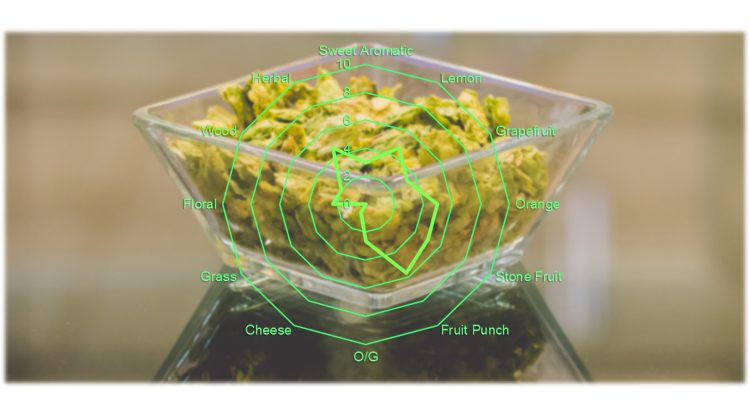An Aroma a Day...Keeps the Sensory Team Sharp

One of the questions we get asked pretty frequently is how we generate our spider charts. It’s one of the things that we do so often, and is one of the fastest tests that we do in the lab, we tend to overlook the work that does go into generating the aroma charts.
The Cliffs Notes version is that we evaluate hops using the ASBC Hop Grind method with a panel that is staffed by a minimum of three individuals. Panelist scores are averaged to generate the spider charts. Now, with that said, how do we train our staff to be part of a sensory panel?
What does it take to be on the sensory panel? It may seem obvious, but you have to be able to smell the hops. Each person perceives smells differently and life experiences have an effect on how we smell. So before full training, we make sure that the folks on our panel have good aroma perception. Currently, we have up to seven members of the team who be on a panel.
Training starts with basic sensory category recognition. We use the Haas Hop Aroma Standards Kit as our introductory training (https://www.johnihaas.com/aromastandardskit/). This kit features aromas in 12 categories that are standard to the industry so it’s a great way to familiarize the team with smells in each category. Once we’ve done familiarization training with the standards kit, we move on to hops aromas. Hop training starts as a round table practice with a number of different varieties, harvest times and crop years to start identifying the nuances in aromas.
Hop samples are tested using the ASBC hop grind method, Sensory Analysis-16, and scored using our internal scoring sheets. Hop aromas are scored on a scale of 0-10. For example, imagine opening a bottle of Welch’s Concord Grape Juice. Can you just about taste it? That’s the sort of high intensity aroma that would rank as a 10 in our scoring panel. Now think about a Saltine cracker. Not much smell to it is there? That’s what we’d consider an aroma score of 1, where the aroma is there, but there’s not too much to smell aside from “Bland”.
Once we’ve established familiarity with hop aromas and the scoring template, we move on to a blind sensory panel armed with our scoring sheets. It’s one thing to have a round table discussion about aromas, but as humans, we’re extremely sensitive to suggestion and that translates to our sensory perception as well. By doing a blind sensory test, each panelist smells a hop sample and scores it independent from conversation about it. Then we can compare the sensory results between the team. For consistency, we’ll go back and smell the same hop lot over multiple instances to get an idea of variance between each panel member.
The spider charts generated by our team are just one snapshot in time and there's always differences in how each person perceives aromas. But, like many in our industry, we do our utmost to ensure the quality and consistency of the sensory notes we provide.